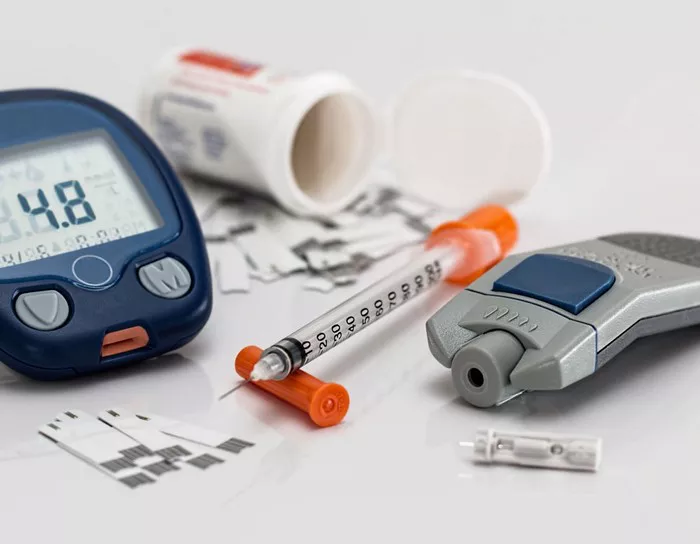Insulin therapy plays a pivotal role in the management of diabetes, particularly for individuals with type 1 diabetes and those with type 2 diabetes who require insulin supplementation. With advancements in medical technology and pharmaceutical innovation, a wide array of insulin formulations are available to meet the diverse needs of individuals living with diabetes.
In this comprehensive guide, we’ll delve into the various types of insulin used in diabetes management, exploring their characteristics, onset and duration of action, administration methods, and considerations for personalized treatment plans.
Understanding Insulin and Its Role in Diabetes Management
Insulin is a hormone produced by beta cells in the pancreas that plays a critical role in regulating blood sugar levels. It facilitates the uptake of glucose from the bloodstream into cells, where it is utilized for energy or stored for future use.
In individuals with diabetes, either the pancreas produces insufficient insulin (as in type 1 diabetes) or the body’s cells become resistant to the effects of insulin (as in type 2 diabetes), leading to high blood sugar levels—a condition known as hyperglycemia.
Types of Insulin Based on Onset and Duration of Action
Insulin formulations are categorized based on their onset and duration of action, which determine how quickly they begin to lower blood sugar levels and how long their effects last. The main types of insulin include:
1. Rapid-Acting Insulin:
Rapid-acting insulin analogs are designed to mimic the body’s natural insulin response to meals. They typically have an onset of action within 15 minutes after injection, peak within 1-2 hours, and last for 3-4 hours. Examples include insulin lispro (Humalog), insulin aspart (NovoLog), and insulin glulisine (Apidra).
2. Short-Acting Insulin:
Short-acting insulin, also known as regular insulin, has a slower onset of action compared to rapid-acting insulin. It typically begins working within 30 minutes after injection, peaks within 2-3 hours, and lasts for 3-6 hours. Regular insulin is available in both injectable and inhalable forms.
3. Intermediate-Acting Insulin:
Intermediate-acting insulin formulations have a delayed onset of action and a longer duration of effect compared to rapid-acting and short-acting insulins. They typically begin working within 2-4 hours after injection, peak within 4-12 hours, and last for 12-18 hours. Examples include neutral protamine Hagedorn (NPH) insulin and insulin detemir (Levemir).
4. Long-Acting Insulin:
Long-acting insulins provide a steady and prolonged release of insulin over an extended period, helping to maintain stable blood sugar levels between meals and overnight. They have a gradual onset of action, peak at a relatively low level, and last for up to 24 hours or longer. Examples include insulin glargine (Lantus, Basaglar, Toujeo), insulin degludec (Tresiba), and insulin glargine/lixisenatide (Soliqua).
Methods of Insulin Administration
Insulin can be administered through various methods, including:
1. Subcutaneous Injection:
The most common method of insulin delivery involves injecting insulin into the fatty tissue just beneath the skin using a syringe, insulin pen, or insulin pump.
2. Insulin Pump Therapy:
Insulin pumps are small, wearable devices that deliver insulin continuously through a thin tube inserted under the skin. They offer precise insulin dosing and flexibility in mealtime insulin adjustments.
3. Inhalable Insulin:
A newer option for insulin delivery involves inhaling insulin powder through the mouth using a specialized inhaler device. Inhalable insulin provides rapid-acting insulin coverage for mealtime blood sugar control.
Considerations for Personalized Treatment Plans
When prescribing insulin therapy, healthcare providers consider various factors, including the individual’s diabetes type, blood sugar monitoring regimen, lifestyle factors, meal patterns, physical activity levels, and preferences for insulin administration. Personalized treatment plans are tailored to meet the unique needs and goals of each individual, aiming to achieve optimal blood sugar control while minimizing the risk of hypoglycemia and other potential complications.
Conclusion
In conclusion, the diverse types of insulin available offer individuals living with diabetes flexibility, convenience, and precision in managing their blood sugar levels. From rapid-acting insulins for mealtime coverage to long-acting insulins for basal insulin replacement, each insulin formulation serves a specific purpose in optimizing diabetes management.
By working closely with healthcare providers to develop personalized insulin regimens and adhering to recommended treatment protocols, individuals with diabetes can achieve better blood sugar control, reduce the risk of diabetes-related complications, and improve their overall quality of life.


























